Sea glass is found on beaches along oceans or large lakes. It is one of the very few cases of a valuable item being created from the actions of the environment on man-made litter. At one point it was whole. Maybe it was a family’s only plate during the Great Depression, a famous novelist’s ink bottle, a beer bottle broken in a bar fight, or a lover’s long lost message in a bottle. But at some point, somehow, it was forgotten, lost, broken, tumbled, tossed, smashed, forced to cover large distances by the water’s immense power. Yet, somehow it emerges from its toils smoothed by the water and the sand, frosted, colorful, beautiful, a perfect metaphor for human suffering.
I’m quite fond of sea glass. Its metaphor is incredibly empowering. But I don’t just like it for its metaphor, or for its beauty, I like it because it is a little reminder of the powerful connections between people all over the world. Someone, somewhere created this product, and then someone, somewhere used it for an unknown amount of time, and maybe someone else, somewhere else used it too, maybe a number of someones used it, and then it was lost, and broken, and forgotten. But the ocean took it upon itself to transform it into something maybe more beautiful than before. And someone else, somewhere else finds this little piece of glass and, without even thinking about where it came from, places it in his or her pocket to use for an unknown reason. But, regardless of whether or not this “finder of the sea glass” realizes it, the fact remains, he or she is indeed connected to at least one other, if not several other, people through this small gesture of collecting the pretty little piece of glass on the beach.
Stephanie and I looked for sea glass yesterday at Kusu Island. We found many shells and pieces of coral. No sea glass though. It is rare. More and more so now. Maybe that is for the best. Beautiful things aren’t necessarily given to us. Maybe we should have to search for the color in toil, the beauty that arises from suffering, those human connections, the sea glass.
Stephanie and I spent part of our afternoon on Kusu Island, wandering aimlessly along the beach in search the elusive glass, admiring the skyline of Singapore in the distance, and squishing the sand between our toes. But the aimless, beach wandering wasn’t even the best part of the day (I know, you’re thinking “how could this get any better?!” but it does).
Kusu Island is a small island about 5 kilometers off the coast of Singapore. Small, as in you can stand on one end and see the other end. The legend goes that a Malay sailor and a Chinese sailor were shipwrecked and drowning off the coast of Singapore. A giant turtle witnessed their distress and turned himself into an island to save them from death. To offer thanks, the two sailors each built a temple on the island. Every year devotees make a pilgrimage to Kusu in the 9th lunar month (mid-October to mid-November) to pray for wealth, prosperity, fulfillment of destiny, children, health and all things related to good luck in general. The first thing you do when you arrive on the island is aim a coin at three bells encased in a lotus flower sculpture. If your coin makes the bell ring, your wish will come true.
After dutifully making our first wish, Stephanie and I followed the incense that was floating on the breeze toward the little Chinese Temple where worshipers where offering prayers and thanksgivings in front of ornate, colorful little alters. They placed fruit, oil and small trinkets on a large alter in front of the temple and bought stacks of paper to be burned in large fires in order to increase the chance their prayers would be answered. Family after family stepped up to the small alters, one by one, offering up their prayers and waving incense until it was dancing, thick in the air.
Stephanie and I continued along the winding path toward the Malay temple, occasionally stopping to admire the little turtles, strategically placed, no doubt, throughout the island so tourist would not feel disappointed when visiting “turtle” island. And now this is the best part.
We climbed 152 steps along a path lined with trees all covered in gold and red fabric to the top of a little hill where a hot yellow shack stood, the worshipers’ songs and shouts of praise threatening to topple its walls. This little Malay temple looked more like a busy marketplace than a house of worship. Devotees carried incense and money pausing to offer praise and a donation to each of the three alters: the father, the mother, and the daughter. The father, mother and daughter promise to then carry the prayers onto God. Young Malay men offer to tie little yellow wishing strings to your wrists. The older Malay men provide loud and confident blessings to each person in a never ending line of worshipers, and everyone is laughing and yelling to each other, while three middle-aged men kneel, seemingly undisturbed by all the chaos, in front of the daughter’s shrine singing the most hauntingly beautiful song of praise I’ve ever heard. It is a parallel universe, and Stephanie and I stick out like sore thumbs, all doe-eyed in awe and confusion about where to stand and what to do.
Then a young Malay man approaches us and offers to give us a brief tour, obviously not fooled by our miserable attempt to blend in. He explains that the worshipers all make a pilgrimage once a year to the same shrine to pray to the father, mother, and daughter who will then take their prayers on to God Himself. He stresses that God is the most important factor in this little telephone game, but the father, mother and daughter are good messengers. Some worshipers are here to pray for babies he says. “Do we want babies?” Stephanie and I nearly die laughing at this point as we explain that that is not what we would like to pray for today. “What else can we pray for instead?” Well, others pray for nice boyfriend, or husband, or good luck, good health and prosperity. We like these better.
He also explains that worshipers offer donations for the upkeep of the shrines and bring other gifts like the little bananas sitting on the alter in front of us. Our impromptu tour guide then proceeds to take two bananas from the alter and insists that we eat them, which feels a little odd to me considering they are someone’s offering to the gods, but I oblige non-the-less (I haven’t had lunch). He then gives each of us a sweet smelling flower to stick behind our ears. The mother likes these flowers, he explains.
Finally, he leads us over to one of the men giving out all the blessings, tells him what we’d like to pray for, and ties a little yellow string around each of our wrists. The man asks the mother to give me good health, a good man, good life, wealth, and whatever else may be in my heart at the moment. He says something I don’t understand, waves the incense around, clasps my hands together, and rubs some sweet smelling perfume on my shoulders, neck and wrists. Then he shouts, with great enthusiasm, something else I don’t understand and gives me a toothy grin before moving on to pray with the next devotee in line behind me.
Stephanie and I walked slowly away from the temple, a bit shocked still by the beauty, chaos, and pure joy of it all. You’d be crazy if you didn’t feel God in that place. He was sitting there laughing, right next to the old Malay man while he shouted blessings, occasionally shooting bits of spit through his teeth at my face. We followed the lead of the other worshipers, and tied our little yellow strings to tree branches on the way down the steps. I don’t mind leaving my prayers with the father, mother and daughter there. They’re in good hands.
As we silently climbed down the stairs leading away from the shack of a temple, each lost in our own meditative thoughts, I couldn’t help but notice all the prayers written on the railings. Most of the prayers were in Malay or Chinese, but an occasional few were written in English. Many people had prayed for good health and happiness. One person had asked for his dad “to become very rich.” Several others had written their lottery ticket numbers. My favorite, though, was the student who wished “to pass his exams and become very clever.” Maybe it’s the teacher in me.
The rest of last week was spent decorating our house (as you can tell from the previously posted picture montage) in preparation for the “You, A Plate, and Your Favorite State” party we hosted on Saturday evening. Though hot without air conditioning, the pot luck was an immense success and we all enjoyed food ranging from nachos and guacamole to Yorkshire apple crisp to crab pasta bake to cornbread. I prepared grunt (yes the dish is called grunt), a dish with European roots that is most often served on the northeast coast of the U.S. It is basically blueberry fruit compote with cinnamon dumplings, very similar to a cobbler but prepared on the stove top. It is called grunt, because of the sound the dumplings supposedly make when dropped into the fruit compote. Unfortunately, though we listened attentively, we didn’t hear the dumplings grunt.
Today is a rainy Monday, and after a three-hour-long lesson planning meeting this afternoon, I definitely have a case of the Monday blues. Off to the gym and then to Starbucks. Endorphins and caffeine should do the trick.
TIA,
Rachel
Monday, November 9, 2009
Subscribe to:
Post Comments (Atom)

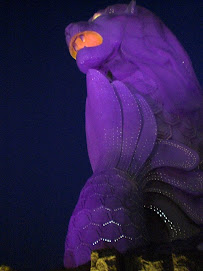





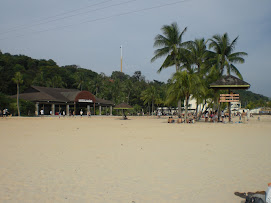


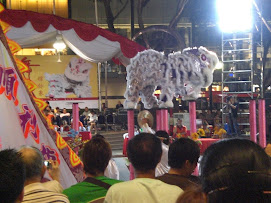







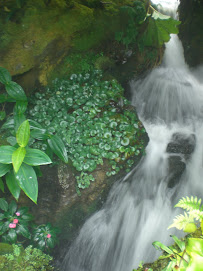



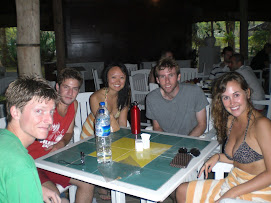
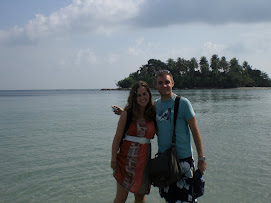
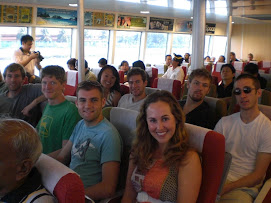

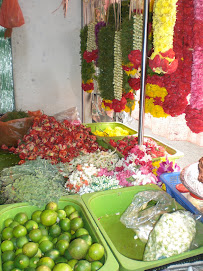


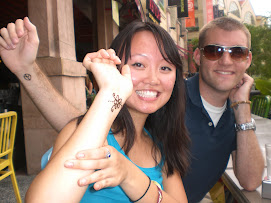

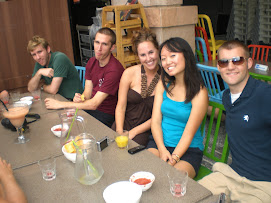

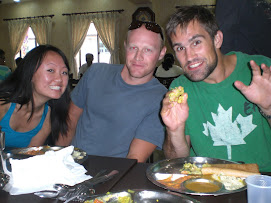


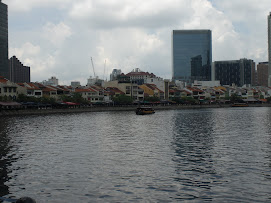



No comments:
Post a Comment